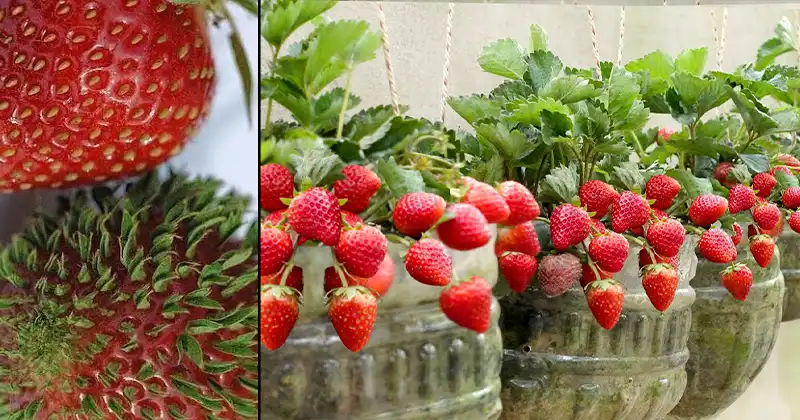Cultivating strawberries at home is a delightful endeavor appreciated by many garden enthusiasts. With their vibrant red color, sweet taste, and versatility, strawberries stand out as a favorite fruit for home growers. If space is limited or if you’re seeking a unique method for cultivating these luscious berries, consider the ingenious and eco-friendly solution of growing them in 5L plastic bottles. This article guides you through the steps to achieve abundant strawberry production using these compact containers.
Container Gardening Essentials
- Container Selection: Repurpose 5-liter plastic bottles, often discarded as waste, to create a thriving strawberry garden. Cut off the tops, leaving the bottom section as a self-contained growing environment.
- Soil Preparation: Create an ideal growing environment by filling the bottles with a well-draining mix of potting soil and compost in equal proportions. Ensure the mixture is light and fluffy to allow the roots to breathe.
- Strawberry Varieties: Choose from three main types of strawberries – June-bearing, everbearing, and day-neutral. For continuous production, consider everbearing or day-neutral varieties. The compact size of Alpine strawberries makes them a great fit for container gardening.
- Planting Technique: Plant strawberry runners or young plants in the bottles, ensuring the crown sits just above the soil surface. Space them 8-10 inches apart for proper growth.
- Sunlight: Position the containers in a sunny spot, providing at least 6-8 hours of daily sunlight. Full sun exposure is crucial for flowering and fruit production.
- Watering Routine: Maintain consistent soil moisture, avoiding waterlogging. Containers dry out quickly, so regular watering, especially during hot weather, is essential.
- Fertilization: Strawberries are heavy feeders. Apply a balanced, slow-release fertilizer every 4-6 weeks during the growing season to ensure abundant fruit production.
- Pest and Disease Management: Monitor for common strawberry pests and diseases like aphids, slugs, and gray mold. Regular inspection and organic pest control methods will safeguard your strawberry crop.
- Pruning and Runner Control: Trim excess runners to encourage vigorous growth and increase strawberry production. This directs the plant’s energy towards fruit development for a healthier harvest.
By following these steps and caring for your strawberry plants, you’ll soon enjoy a bountiful harvest of delicious, homegrown strawberries from your 5L plastic bottle containers. This cost-effective and space-saving solution brings the joy of fresh strawberries to your home, regardless of limited gardening space. Happy gardening!
FUN FACT
Explore the fascinating phenomenon of vivipary, where certain fruit seeds, including strawberries, germinate inside the fruit while still attached to the parent plant. This unique process contributes to the rapid propagation of strawberries, showcasing their remarkable adaptability and prolific reproductive abilities.
